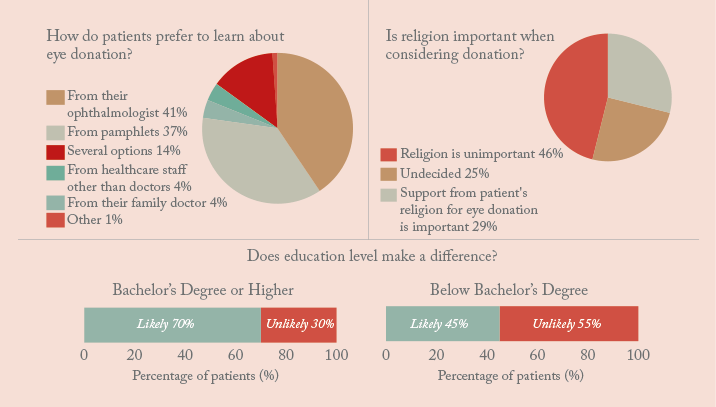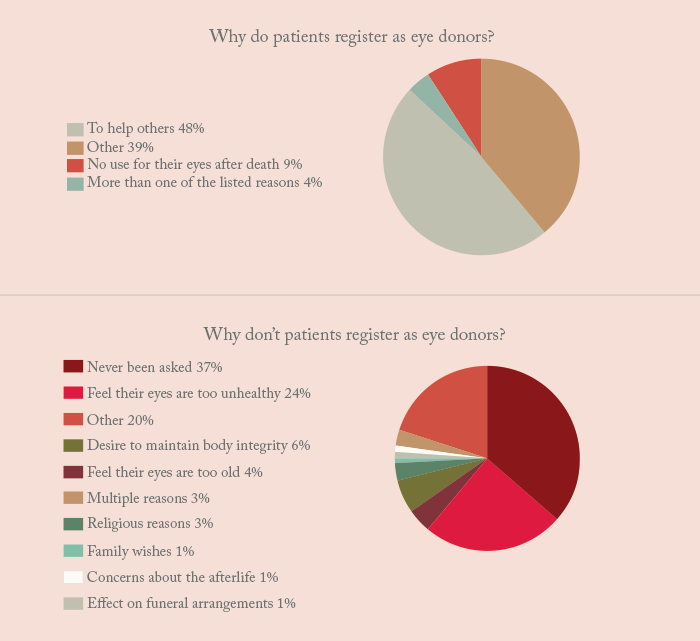
Access to human eye tissue is a necessity for many researchers in the field of vision science, and has fuelled many advances in the understanding and treatment of ocular disease. But the number of people willing to donate their eyes for research purposes has been falling for years, and this trend shows no sign of changing (1). It’s understandable that people may be more squeamish about the idea of donating the windows to their soul than say, a kidney, but what are the real barriers to convincing people to leave their eyes to science? A study of patients attending an ophthalmology practice and their family members, conducted in 2013, provides some insight into the reasons (2). Interestingly, the majority of study participants (65 percent) simply hadn’t considered donation either because they hadn’t been asked about it, or mistakenly believed their eyes were too old or unhealthy to be of any use. So is the problem simply a lack of education and awareness, and if so, what’s the solution? A recent viewpoint article in JAMA Ophthalmology (1) makes a number of recommendations. First, it needn’t be viewed as an awkward topic for ophthalmologists or healthcare workers to broach: according to survey participants, most felt that simply having a discussion about donation, or even receiving a pamphlet about it, would be welcomed by them. Second, by working and consulting more closely with eye banks, research institutions can improve the volume and quality of the tissue that they receive. Finally, the creation of eye donation registries specifically for research purposes could have a big impact. A registry that categorizes donor eyes based on their disease is already under development in the US (3), and should allow patients to donate their tissue to researchers working on their particular disease, with the additional option of granting researchers access to their medical records.
But ultimately, it’s up to doctors and vision scientists to spread the word and show the public why donation can help bring great benefits all round, to scientific research, medical practice, and future generations of patients.

References
- AM Williams et al., “Increasing the availability and quality of donor eyes for research”, JAMA Ophthalmol, 14, [Epub ahead of print] (2016). PMID: 26768017. AM Williams et al., “Patient and family attitudes about an eye donation registry for research”, Curr Eye Res, 38, 945–951 (2013). PMID: 23767667. Cleveland Eye Bank, “Vision”, (2015). Available at: http://bit.ly/20iogip. Accessed February 1, 2016.
